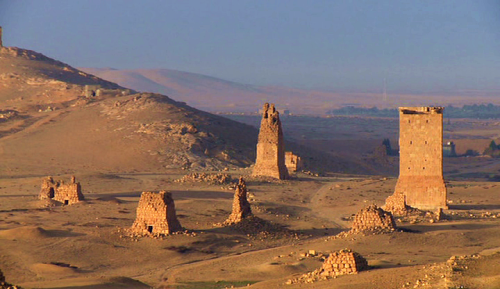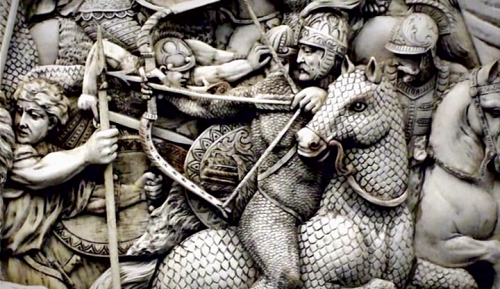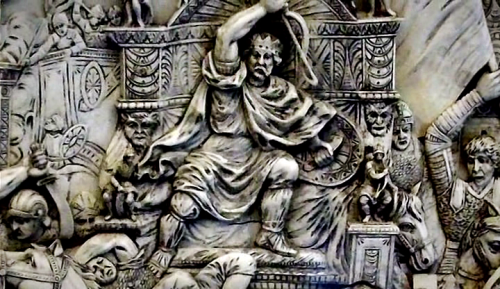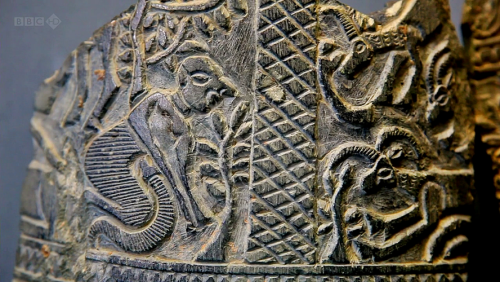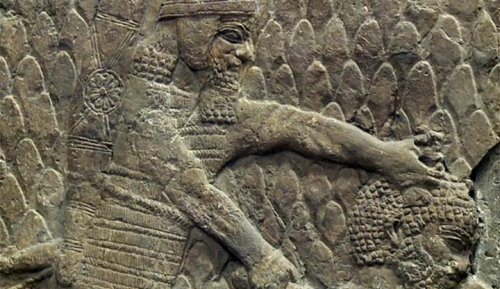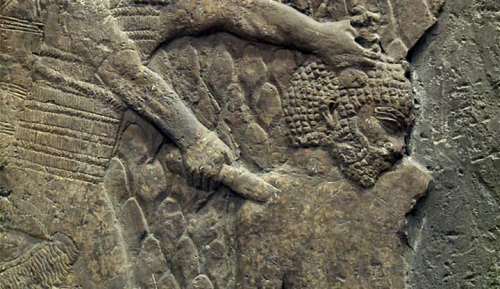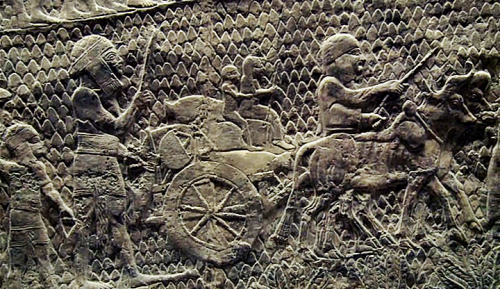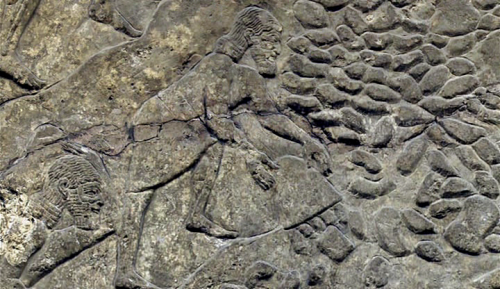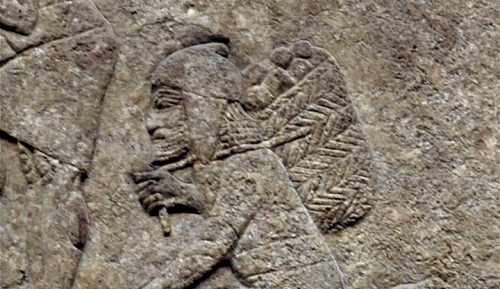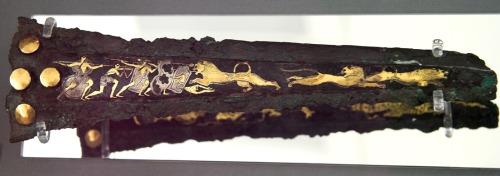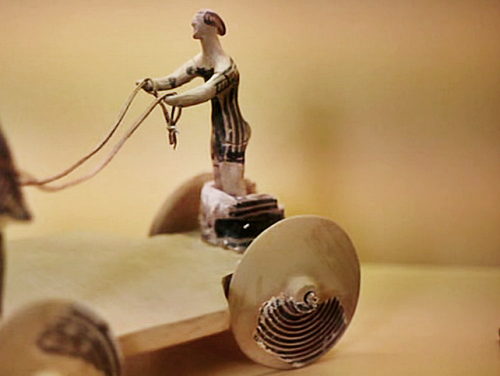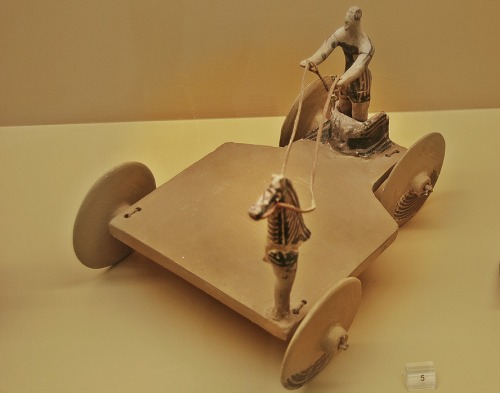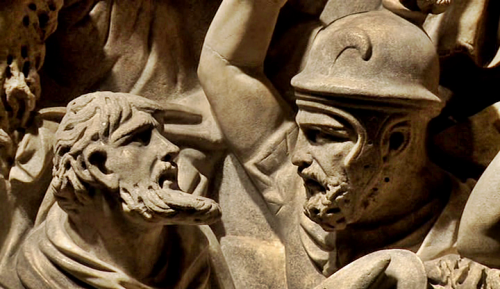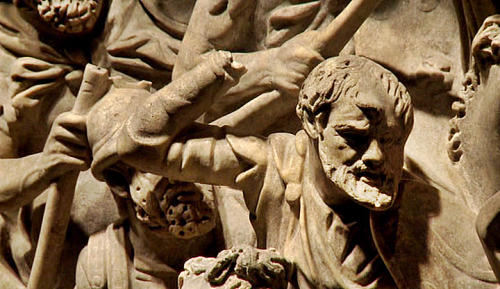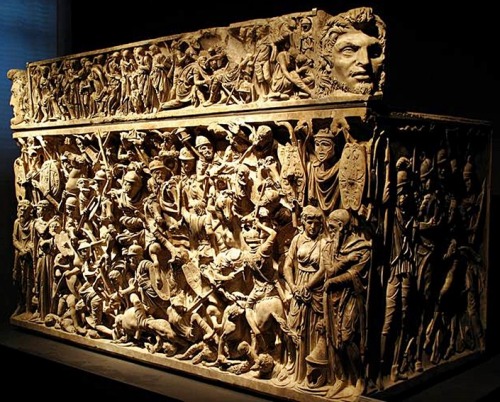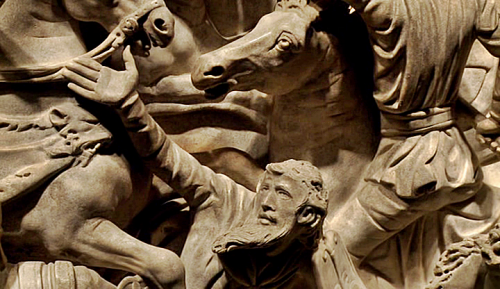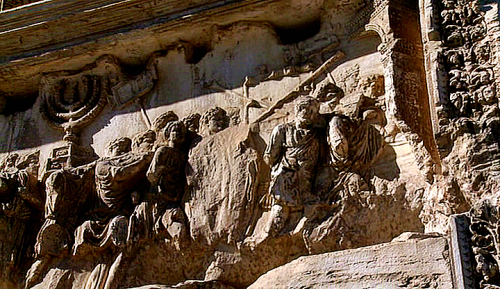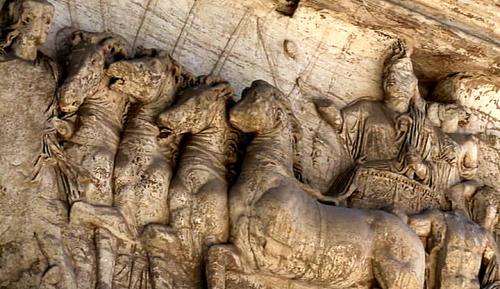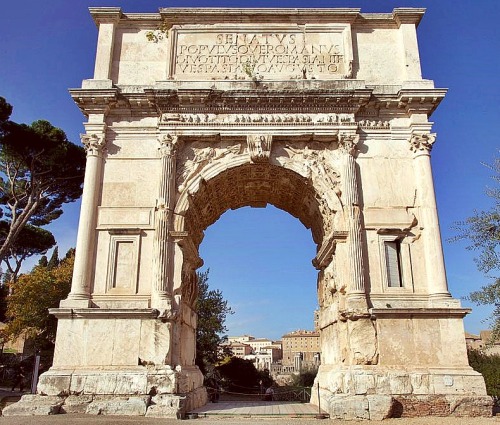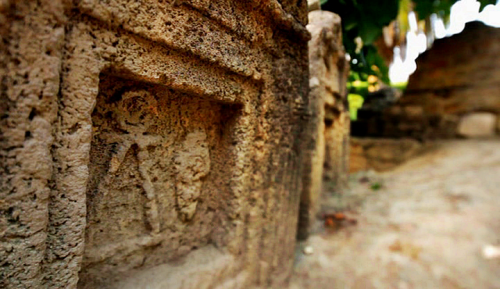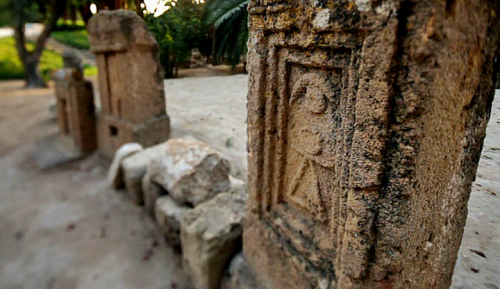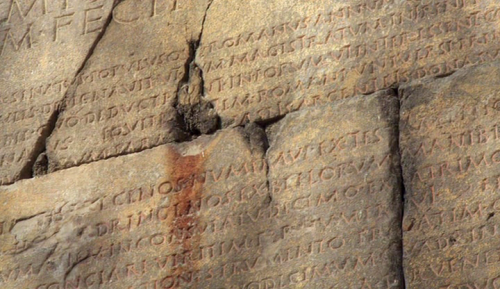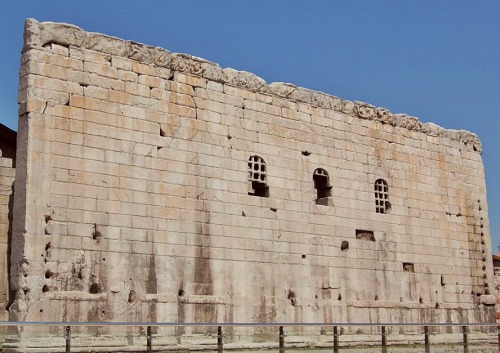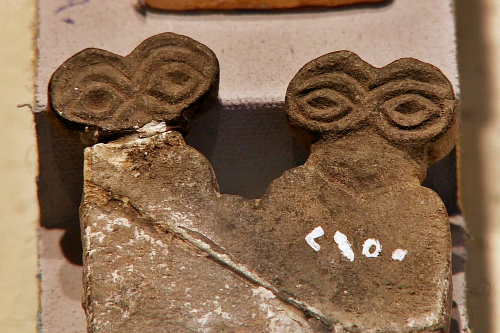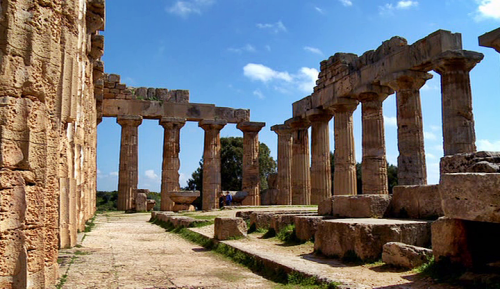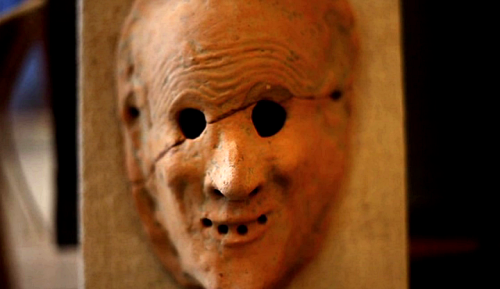#bbc two
Ancient Worlds - BBC Two
Episode 6 “City of Man, City of God”
Palmyra was one of the most important cultural centres of the ancient world. Located in an oasis in the Syrian desert, it was a vital caravan stop for travellers crossing the desert. Palmyra grew steadily in importance as a city on the trade route linking Persia, India and China with the Roman Empire -it was made part of the Roman province of Syria in the mid-first century AD-. In 129, Palmyra was visited by emperor Hadrian, who granted it the status of a free city.
Palmyra exerted a decisive influence on the evolution of neoclassical architecture and modern urbanization, uniting the forms of Graeco-Roman art with indigenous elements and Persian influeces. Unique creations came into existence, notably in the domain of funerary sculpture.
Outside the ancient walls, along the four main access roads to the city, stood four cemeteries, Valley of the Tombs, which feature different types of tomb. The oldest and most distinctive group is represented by the funerary towers, tall multi-storey sandstone buildings belonging to the richest families. Some towers had four storeys and could accommodate up to 300 sarcophagi.
Valley of the Tombs, Palmyra -Tadmur- Syria
Post link
Ancient Worlds - BBC Two
Episode 4 “Return of the King”
Scenes from the Battle of Gaugamela, ivory relief (anonymous artist).
TheBattle of Gaugamela(alsoBattle of Arbela) took place in 331 BC between the forces of Alexander the Great of Macedon and the Persiansled by Darius III. It was a decisive victory for the Hellenic League that decided the fate of the Persian Empire. The battle took place near Gaugamela, close to the modern city ofMosul,Iraq.
The Hellenic League was heavily outnumbered but it emerged victorious due Alexander’s superior tactics and army. Many Persian soldiers lost their lives, so many that the enemy ensured that Darius would never again raise an imperial army. Some classical sources proclaim that one of the determinant factors in the Persian’s defeat against the Macedonians was king Darius: he realised that victory was hopeless, panicked and fled the battle before any victor had been decided. Another source accounts that Darius was abandoned by his men and not -as Macedonian propaganda would say- that he let his men down (picture n. 1, detail: Darius’ flight)
The relief was sculpted in the 18th century and it was inspired by a Charles Le Brun’s painting on the same subject.
National Archaeological Museum of Spain, Madrid, Spain
Post link
Ancient Worlds - BBC Two
Episode 1 “Come Together”
One of the earliest images of the development of agriculture.
Fragment of a vessel from the Temple of ShamashatMari, Syria. The staetite relief depicts a man tending to a plant. (Early dynastic period I, c. 2900 BC).
Agriculture, growing crops rather than raising livestock, pre-dates the first cities by thousands of years. But at some point agricultural activity in Mesopotamia became more intensive and on a larger scale than had ever been seen before. The geography of southern Mesopotamia is such that agriculture is possible only with irrigation and good drainage, a fact which had a profound effect on the evolution of early civilisation. The need for irrigation led the Sumerians, and later the Akkadians, to build their cities along the TigrisandEuphrates and the branches of these rivers. The farmers built dams and dug canals to bring the water to the crops, on which all their lives now depended. The social consequences of this cooperation were profound; those farmers were planting the seed from which the tree of civilisation would grow.
The city of Mari, situated on the right bank of the Euphrates river, flourished in the 3rd millennium BC. Excavations discoved an enormous palace, with nearly 300 rooms and two floors and also an archive over 20.000 tablets in Akkadian language written in cuneiform. The temple of Shamash was dedicated to the Sun god, who was regarded among Mari’s most important deities.
National Museum of Damascus, Syria
Post link
Ancient Worlds - BBC Two
Episode 2 “The Age of Iron”
TheLachish Relief, a series of stone panels which decorated the walls of the Assyrian king Sennacherib’s great palace at Nineveh. The reliefs narrate the story of the siege and capture of the city of Lachish,inJudah, in 701 BC.
The Lachish relief shows Sennacherib as an invincible king presiding over a perfect victory. Soldiers storm the town walls while a procession of prisoners are marched out of the town into exile, through the countryside, to be resettled elsewhere in the Assyrian Empire. Below them high officials and foreigners are being tortured and executed. The panel also depicts the looting of the city and the surviving men put to work in stone quarries (pictures n. 4, 5). Such scenes demonstrated the terrible consequences of rebelling against the Assyrian empire.
PART III
The British Museum, London, UK
Post link
Ancient Worlds - BBC Two
Episode 2 “The Age of Iron”
TheLachish Relief, a well-preserved series of stone panels which decorated the walls of the Assyrian king Sennacherib’s great palace at Nineveh. The reliefs narrate the story of the siege and capture of the ancient city of Lachish, inJudah, in 701 BC.
King Sennacherib reigned from 704 to 681 BC. He moved the empire’s capital to the ancient city of Nineveh and built the Great Palace of Nineveh, also known as the South-West Palace. Many rooms were decorated with alabaster wall reliefs.
The Lachish relief hold depictions of Assyrian siege ramps, battering rams, sappers, and other siege machines and army units, along with Lachish’s architecture and its final surrender. The reliefs also show scenes of extreme violence: the defenders of the city being thrown over the ramparts, impaled, having their throats cut and asking for mercy. Warfare is a recurring theme in Assyrian art and texts.
The single inscription on the reliefs reads:
“Sennacherib, the mighty king, king of the country of Assyria, sitting on the throne of judgment, before (or at the entrance of) the city of Lachish (Lakhisha). I give permission for its slaughter”
PART II
The British Museum, London, UK
Post link
Ancient Worlds - BBC Two
Episode 2 “The Age of Iron”
Lachishwas the second most important city in the southern kingdom of Judah,part of the Kingdom of Israel.
Occupation at the site of Lachish began during the Neolithic period and during the 10th and 9th centuries BC it was settled by the Israelites. It was heavily fortified, surrounded by two walls and ramparts and a royal palace was built on a platform in the center of the city.
In 701 BC, during the revolt of king HezekiahagainstAssyria, Lachish was besieged and captured by the Assyrian king Sennacherib. The Assyrian forces, in his invasion of the city, constructed the only siege ramp excavated in the ancient Near East. More than 1000 iron arrowheads were found in the ramp as well as a chain for catching the battering rams. Excavations also revealed approximately 1500 skeletons of men, women and children in one of the caves near the site, indicating the ferocity of the battle. The survivors were mass deported to Assyria, where they were forced to work as slaves.
The city was rebuilt in the late 7th century BC during the decline of the Neo-Assyrian Empire, but it fell to the greatest king of the Neo-Babylonian Dynasty, Nebuchadnezzar II in his campaign against Judah in 586 BC. After the fall of the Achaemenid Empire at the hands of Alexander the Great the site was abandoned and it has been unoccupied since then.
The events surrounding the conquest of Lachish by the Assyrians are recorded in the Lachish reliefs. The reliefs were part of the decoration of the South-West Palace of Sennacherib in Nineveh.
PART I
Tel Lachish, Israel
Post link
Ancient Worlds - BBC Two
Episode 2 “The Age of Iron”
“Lion Hunt dagger”. Bronze dagger inlaid with silver and gold from Mycenae.
The dagger is decorated with a scene depicting warriors with spears and shields fighting lions. It was found in Shaft Grave IVofGrave Circle A at Mycenae and it’s dated to the 16th century BC- Late Bronze Age.
Grave Circle A was part of a large cemetery outside Mycenae’s acropolis walls. It comprises six shaft graves, where nineteen bodies were buried. The wealth of the grave gifts reveals the high social rank of the deceased: gold jewelry and vases, gold death masks, decorated swords, bronze objects and artefacts made of imported materials like amber, lapis lazuli and ostrich eggs. The large number of weapons found shows that some of the dead were very good an important warriors. The site was excavated by the archaeologist Heinrich Schliemann in 1876.
The dagger was not used in actual warfare but held importance as decorative burial good for a powerful and wealthy Mycenaean citizen. The golden artwork on the dagger reflects Minoan influences like the introduction of animal figures, the delicate patterns and the shields of the hunters.
National Archaeological Museum of Athens, Athens, Greece
Post link
Ancient Worlds - BBC Two
Episode 3 “The Greek Thing”
A chariot driven by a charioteer. Terracota figurine. Votive offering from the 8th century BC on display at the Ancient Agora Museum ofAthens.
The Ancient Agora Museum is housed in the -reconstructed- Stoa of Attalos (a stoa was a covered portico) in the Agora of Athens, built c. 150 BC. The exhibition in the museum gallery holds archaeological finds from the ancient Agora. The collection of the museum includes clay, bronze and glass objects, sculptures, coins and inscriptions from the 7th to the 5th century BC. The earliest antiquities, potsherds, vases, terracotta figurines and weapons, dating from the Neolothic, Bronze Age, Iron Age and Geometric period, come from wells and tombs excavated in the area of the Athenian Agora and its surroundings.
Terracota figurines were a mode of artistic and religious expression, familiar objects to the ancient Greeks. Figurines are found in settlements, in graves and shrines. They stood in houses as mere decorations, or served as cult images in small house shrines. Some of them functioned as charms to ward off evil, others were brought to temples and sanctuaries as offerings to the gods and deposited in graves either as possessions of the deceased, gifts, or protective devices.
Ancient Agora Museum, Stoa of Attalos, Athens, Greece
Post link
Ancient Worlds - BBC Two
Episode 5 “The Republic of Virtue”
The Battle of Cannae (in the summer of 216 BC) is one of the greatest battles of the Second Punic War and one of the worst defeats in Roman history.
The army of CarthageunderHannibal Barca (247 - 183/182 BC), the Carthaginian military commander and tactician, fought and defeated a larger army of the Roman Republic under the consuls L. Aemilius Paullus and C.Terrentius Varro.
Having crossed the Alps with his elephants, Hannibal descended into Italy and quickly won major victories at both TrebiaandLake Trasimene. In July 216 BC the Romans pinned down the Carthaginian army in the neighborhood of Cannae (Apulia, southeast Italy). The battle was engaged on the second of August. Hannibal’s tactics were successful and the Roman army, with its heavy infantry was effectively destroyed as a fighting force. Around 70.000 Roman and allied infantry died that day. The consul Paullus died in the battle, while Varro managed to escape.
After this event, many Roman allies switched sides. Sardiniarevolted;Capua, the richest and most populous city inCampania, became Hannibal’s new base and he promised that once he’d conquered Italy, Capua, rather than Rome, would be capital in Italy. His brother Mago Barca was sent to Carthage to announce the victory. He made quite an impression when he poured out hundreds of golden rings taken from the bodies of the Romans killed in action at the entrance of the Carthaginian Senate building.
Hannibal occupied much of Italy for 15 years until he was forced to return to Carthage. He was decisively defeated at the Battle of Zama in 202 BC.
There is a single column which commemorates the battle near the area where most historians think the battle was fought.
Picture n. 3: bust of Hannibal Barca
‘Cannae Battlefield’, Barletta, Apulia , Italy
Post link
Ancient Worlds - BBC Two
Episode 5 “The Republic of Virtue”
ThePortonaccio sarcophagus (c. 180-200 AD) was found in the archaeological site of Portonaccio, north of Rome. It was used for the burial of a Roman general involved in the campaigns of Marcus Aurelius (a military insignia which can be seen on the upper edge of the casket identifies the deceased as the official Aulus Iulius Pompilius).
The marble sarcophagus shows on its front a symbolic and very dramatic battle between Romans and Germanic tribesmen staged on two levels. The composition focuses on the progress of a Roman horseman (the deceased, his face unfinished) in a melee of soldiers, spears and horses. The bas-reliefs on the sides of the sarcophagus show events subsequent to the clash: on one side, barbarian prisoners crossing a river led by Roman soldiers along a boat bridge, on the other side the chieftains submitting to the Roman officials. The frieze on the lid, between two corner mascarons, celebrates the deceased and his spouse, portrayed in the centre.
The harsh lines and drilling result in great contrasts between the light and dark. The extreme contrast of shadow and deeper lines makes the expressions of pain and suffering more painful, showing the torment incumbent on those who rebel against the rule of Rome. The decoration od the sarcophagus was inspired by many scenes of the Column of Marcus Aurelius.
The sarcophagus would serve as a reminder to visitors to the necropolis of the strength, valor and achievements of this high ranking officer and the Roman army.
Palazzo Massimo, Museo Nazionale Romano, Rome, Italy
Post link
Ancient Worlds - BBC Two
Episode 6 “City of Man, City of God”
TheArch of Titus (Arcus Titi) is a triumphal arch located at the entrance to the Forum Romanum, at the highest point of the via Sacra.
The arch was constructed in 81 AD by the Roman Emperor Domitian shortly after the death of his older brother Titus (Emperor from 79 to 81 AD) to commemorate the victories of his father VespasianandTitus in the Jewish WarinJudaea.
In 66 AD Jewish Zealots started a revolt against the Roman occupation of Judaea. Vespasian was sent from Rome to suppress the revolt. After Vespasian became emperor, his son Titus took over command of the troops. The siege of Jerusalem in 70 AD was the decisive event of the war. The city was sacked, its famous Second Temple destroyed and its vast riches plundered.
The original inscription on the east side of the arch is still in situ. Originally the letters would have been inlaid with gilded bronze. It reads:
“SENATUS POPOLUS QUE ROMANUS DIVO TITO DIVI VESPASIANI F(filio) VISPASIANO AUGUSTO” - The Roman Senate and People to the divine Titus Vespasianus Augustus, son of the divine Vespasian
The south panel depicts the spoils taken from the Temple in Jerusalem, carried on litters in a triumphal procession, amongst then the silver trumpets and the seven-branched golden Candelabra(Menorah), carved in deep relief. The north panel depicts Titus as Triumphator,riding a four-horse chariot (quadriga) and shows him being crowned by a personification of Victory.ThegoddessRoma stands in front, holding the bridle of one of the horses. This is one of the first examples of divinities and humans being present in one scene together.
The arch of Titus is one of Rome’s oldest and most well preserved arches. It has provided the general model for many triumphal arches, like the Arc de Triomphe in Paris, France.
Post link
Ancient Worlds - BBC Two
Episode 5 “The Republic of Virtue”
TheTophet of Carthage (also Tophet of Salammbó) is an ancient sacred area dedicated to the PhoeniciangodsTanit and Baal located in the CarthageneighborhoodSalammbô. In the Hebrew Bible Tophet was a place outside Jerusalem, in the Valley of Hinnom, where children were sacrifided to the gods Moloch and Baal.
The Tophet of Carthage contains a large number of graves of children; about 20.000 urns were deposited. The urns, often topped by carved stone markers (stelae), contained the charred bones of newborns, very young children and in some cases, of fetuses. Animal remains, mostly sheep and goats, have also been found inside some of the urns. The cemetery was used for over 600 years, between 730 and 146 BC -year of the destruction of Carthage by the Roman Republic.
The tophet is the subject of historical controversy because both ancient texts and archaeological evidence point to the possibility that the children buried in the tophet were sacrificed. Child sacrifice may also have been overemphasized for effect; after the Romans finally defeated Carthage, they engaged in post-war propaganda to make their arch-enemies seem cruel, uncivilised baby killers. Some modern scholars have argued that the Tophet in Carthage may have been a cemetery for stillborn infants and those who died shortly after birth, regardless of the cause. But most archaeologists accept that infant sacrifices did occur. Evidence supporting the tophet burials representing sacrifices include the stela inscriptions which imply that the burials are gifts to the gods and animal remains, who were sacrificed to the gods, presumably in place of children.
Numerous tophets have been identified in the eastern Mediterranean region. The Tophet at Carthage is by far the largest.
Tunis, Tunisia
Post link
Ancient Worlds - BBC Two
Episode 6 “City of Man, City of God”
TheRes Gestae Divi Augusti, (The Deeds of the Divine Augustus) is the political testament, official autobiography and funerary inscription of the first Roman emperor, Augustus (63 BC – 14 AD
The text, written by Augustus himself, gives a first-person record of his life and accomplishments and tell us us how he wanted to be remembered. The work is very impersonal and selective; he doesn’t mention his failures, only his achievements. He wrote it as an Elogium (formal funerary oration) and as propaganda. Augustus may have intended it to be read out in the Senate after his death. In accordance with his wishes, it was inscribed on two bronze pillars in front of his mausoleum in Rome.
The achievements of the Divine Augustus were copied and inscribed on monuments throughout the empire. The best preserved version is on the Temple of Rome and Augustus in Ancyra, Galatia (modern Ankara, Turkey), known as the Monumentum Ancyranum.
Monumentum Ancyranum, Ankara, Turkey
Post link
Richard Miles Archaeologist
ONE DAY, ONE IMAGE
Detail: Assyrian relief sculpture from the North Palace of Ashurbanipal, Nineveh. ‘The Royal lion hunt’ -The king is in his chariot shooting arrows at succession of lions. (c. 645-635 BC)
British Museum, London, UK
Post link
Richard Miles Archaeologist
ONE DAY, ONE IMAGE
The Lefkandi Centaur(10th century BC), found in the necropolis of Lefkandi, Eretria, in the island of Euboea, is the earliest representation of this mythical creature.
The Archaeological Museum of Eretria, Eretria, Euboea, GreecePost link
Richard Miles Archaeologist
ONE DAY, ONE IMAGEAlabaster “Eye Idols” from the ancient site of Tell Brak, north Mesopotamia -Syria- (c. 3500-3300 BC)
Post link
Richard Miles Archaeologist
ONE DAY, ONE IMAGE
Neo-Assyrian art: sculptures, stelae and reliefs (11th – 9th centuries BC) on display at the British Museum, ‘Assyrian Sculpture room’.
Amongst the objects: The White Obelisk of Ashurnasirpal I (first left), The Black Obelisk of Shalmaneser III (center), The Stela of Shamshi-Adad V (right)
The British Museum, London, UK
Post link
Richard Miles Archaeologist
ONE DAY, ONE IMAGE
The Temple of Hera (also known as temple E) at the ancient Greek city of Selinus. It was built towards the middle of the 6th century BC.Archaeological site of Selinunte, province of Trapani, Sicily, Italy
Post link
Richard Miles Archaeologist
ONE DAY, ONE IMAGE
Clay mask (7th-6th centuries BC) from the sanctuary of Artemis Orthia, Sparta.
Archaeological Museum of Sparta, Sparta, Greece
Post link
Richard Miles Archaeologist
ONE DAY, ONE IMAGE
Bronze helmet found in Olympia. Much of the military gear found at the temples of Olympia shows signs of active service.
Archaeological Museum of Olympia, Greece
Post link



